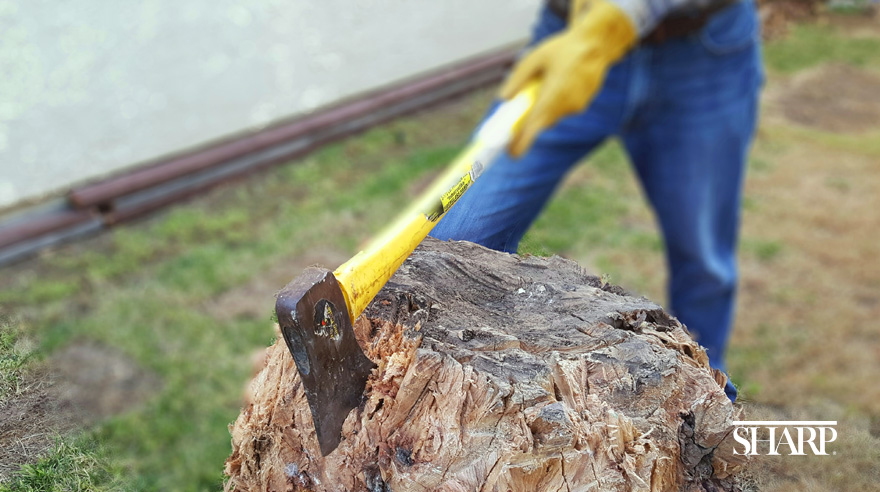Wood is mostly made up of cellulose and lignin, which are both complex carbohydrates. Cellulose is not digestible by humans, but lignin can be partially digested. In general, wood contains very few calories per gram and is not a significant source of energy for humans.
Wood is often thought of as a calorie-free material, but did you know that it actually contains a small amount of calories? According to the National Wood Energy Database, a pound of wood contains approximately 3,600 calories.
While this may not seem like much, it can add up if you’re burning a lot of wood for fuel.
For example, if you were to burn a cord of wood (which weighs 4,000 pounds), you would be consuming over 14 million calories!
Interestingly, the type of wood can make a difference in the calorie content. Hardwoods like oak and maple tend to have more calories than softwoods like pine and cedar.
So if you’re looking to maximize the energy output from your wood burning efforts, be sure to use hardwood!
How Many Calories in 100G of Wood
If you’re wondering how many calories are in 100g of wood, the answer is zero. That’s because wood is not food and therefore does not contain any calories. However, some people may choose to burn wood for fuel, in which case it would release energy (in the form of heat) as it burns.
How Many Calories in Uranium
Uranium is a naturally occurring element that can be found in small amounts in the environment. It is also used in some medical and industrial applications. Because of its radioactivity, uranium has the potential to be harmful to human health.
The amount of calories in uranium will depend on its form. For example, natural uranium contains about 2 million calories per gram, while depleted uranium only has about 1 million calories per gram. However, it is important to note that these numbers are not exact because the calorie content of uranium can vary depending on its enrichment level.
Uranium is not typically considered a food source and therefore it does not have a recommended daily intake (RDI). However, if you are exposed to high levels of radiation from uranium, you may need to increase your intake of calories and other nutrients to help your body repair the damage caused by the radiation.
Calories in Burning Wood
Burning wood is a great way to generate heat and light, but did you know that it also releases calories? In fact, a single piece of wood can release up to 6,000 calories when burned!
That’s a lot of energy that can be used to help keep you warm or cook your food.
But how does this process work? And what are the calorie counts for different types of wood? Read on to find out more about the calorie content of burning wood.
When wood is burned, the cellulose and lignin in the wood are converted into carbon dioxide and water vapor. This process releases energy in the form of heat and light. However, some of the molecules in the smoke are also capable of generating calories.
The exact number of calories released from burning wood depends on the type of wood being burned. For example, hardwoods like oak and maple tend to release more calories than softwoods like pine and cedar. In general, though, it’s estimated that around 6,000 calories are released per pound of dry wood when it’s burned.
How Many Calories are in Plastic
We all know that plastic isn’t the best thing for our environment. But did you know that it could also be bad for your waistline? A new study has found that there are traces of a chemical called Bisphenol A (BPA) in many types of plastic food packaging.
This chemical has been linked to obesity, and the more exposure you have to it, the greater your risk becomes.
So how does this happen? BPA is an endocrine disruptor, meaning it interferes with the way our hormones work.
One of the hormones it affects is leptin, which tells our brain when we’ve had enough to eat. When BPA disrupts leptin signals, we end up overeating and gaining weight.
The good news is that you can avoid BPA by avoiding certain types of plastic.
Look for plastics that are labeled “BPA-free” or “No Added BPA.” And be especially careful with plastics that are heated or come into contact with fatty foods, as this can cause even more BPA to leach out into the food.
How Many Calories in Metal
When it comes to calories, metal isn’t usually something that people think about. However, there are actually a fair amount of calories in metal. The average calorie content of metal is around 1,000 kcal/kg.
This means that a one kilogram chunk of metal would contain around 1,000 calories. Of course, this varies depending on the type of metal and how pure it is. For example, iron has a higher calorie content than aluminum.
So, if you’re trying to lose weight or watch your caloric intake, you might want to avoid snacking on metal!

Credit: www.sharp.com
Does Wood Have Nutritional Value?
Wood does not have any nutritional value. It is made up of cellulose and lignin, which are both indigestible for humans. While some animals can digest wood (like termites), we cannot.
However, wood ash does contain some minerals that can be beneficial for plants, like potassium and calcium.
How Many Calories are in a Timber?
A timber is a large piece of wood that is used in construction. It is typically cut into beams or boards, and can be up to 16 feet long. A timber weighs between 800 and 1,200 pounds.
The number of calories in a timber depends on its size and weight. A small timber may only have a few hundred calories, while a large timber could have over a thousand calories. The majority of the calories in a timber come from its fat and protein content.
Does Wood Have Carbs?
Wood is a complex, natural material made up of many different compounds. While it does contain some carbohydrates, these are in the form of cellulose and lignin, which are not digestible by humans. Therefore, wood does not have any net carbs and will not impact your blood sugar levels.
How Many Calories are in Sawdust?
The average person consumes about 2,000 calories per day. But how many of those calories are actually in sawdust?
Turns out, not many.
In fact, a single tablespoon of sawdust contains just 3 calories. So if you ate an entire cup of sawdust, you’d only be consuming about 24 calories – less than 1% of your daily caloric intake.
Of course, eating that much sawdust would probably make you sick, so it’s not exactly recommended.
But if you’re curious about the calorie content of other common household items, here’s a list:
1 cup of coffee: 2 calories
1 slice of bread: 79 calories
1 banana: 105 calories
1 egg: 78 calories
How to calculate how many calories you need to eat
Conclusion
Wood is not a food and therefore contains no calories.
- The Power of Mobile Accessibility And Real-Time Tracking for Trucking Operations - November 6, 2024
- Why Ease of Use is Crucial in Trucking Dispatch Software - September 22, 2024
- Better Communication With Dispatchers: How Trucking Dispatch Software Can Optimize Operations - September 7, 2024

